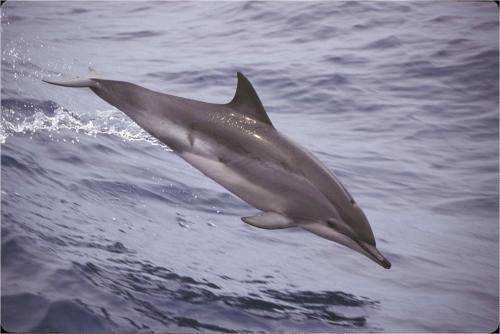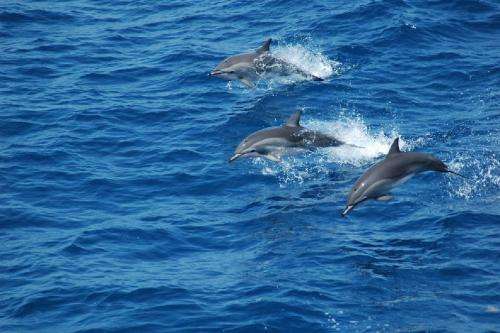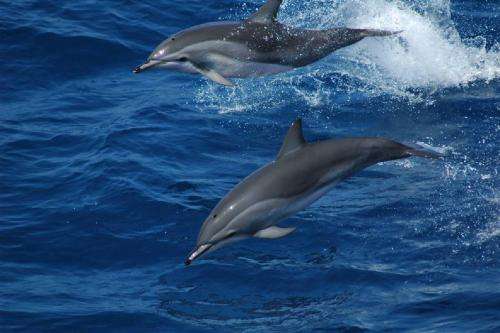Study discovers natural hybridization produced dolphin species

A newly published study on the clymene dolphin, a small and sleek marine mammal living in the Atlantic Ocean, shows that this species arose through natural hybridization between two closely related dolphins species, according to authors from the Wildlife Conservation Society, the American Museum of Natural History's Sackler Institute for Comparative Genomics, the University of Lisbon, and other contributing groups.
In a molecular analysis including the closely related spinner and striped dolphins, scientists conclude that the clymene dolphin is the product of natural hybridization, a process that is more common for plants, fishes, and birds, but quite rare in mammals.
The study appears in the online journal PLOS ONE. The authors include: Ana R. Amaral of the University of Lisbon, Portugal, and the American Museum of Natural History; Gretchen Lovewell of the Mote Marine Laboratory; Maria Manuela Coelho of the University of Lisbon; George Amato of the American Museum of Natural History; and Howard Rosenbaum of the Wildlife Conservation Society and American Museum of Natural History.
"Our study represents the first such documented instance of a marine mammal species originating through the hybridization of two other species," said Ana R. Amaral, lead author of the study and research associate at the American Museum of Natural History. "This also provides us with an excellent opportunity to better understand the mechanisms of evolution."

The classification of the clymene dolphin has been a longstanding challenge to taxonomists, who initially considered it to be a subspecies of the spinner dolphin. Then in 1981, thorough morphological analyses established it as a recognized distinct species. In the current study, researchers sought to clarify outstanding questions about the dolphin's origin and relationships with rigorous genetic analyses.
"With its similar physical appearance to the most closely related species, our genetic results now provide the key insights into this species origin" said Dr. Howard Rosenbaum, Director for WCS's Ocean Giants Program and a senior author on the study. "Very little is known about the clymene dolphin, whose scientific name translated from Greek is oceanid, but ironically also can mean fame or notoriety. Hopefully, our work will help draw greater attention to these dolphins in large parts of their range."
Based on research conducted at the American Museum of Natural History's Sackler Institute for Comparative Genomics, the authors examined the nuclear and mitochondrial DNA from skin samples obtained from both free-ranging dolphins by means of biopsy darts and deceased dolphins obtained through stranding events. Using samples from 72 individual dolphins (both clymene dolphins and the closely related spinner and striped dolphins), the researchers amplified one mitochondrial DNA marker and six nuclear DNA markers as a means of analyzing the evolutionary relationship between the clymene dolphin and its closest relatives.

The level of discordance among the nuclear and mitochondrial markers from the three species, the authors assert, is best explained as an instance of natural hybridization. Specifically, the team discovered that while the mitochondrial genome of the clymene dolphin most resembled the striped dolphin, the nuclear genome revealed a closer relation to the spinner dolphin. The authors also noted that continued hybridization may still occur, although at low levels.
The clymene dolphin grows up to nearly seven feet in length and inhabits the tropical and temperate waters of the Atlantic Ocean. Threats to the species include incidental capture as bycatch in fishing nets, which in some parts of the range has turned into direct hunts for either human consumption or shark bait.
Journal information: PLoS ONE
Provided by Wildlife Conservation Society




















